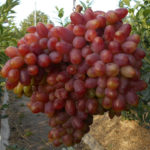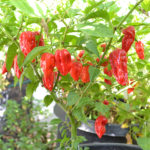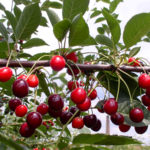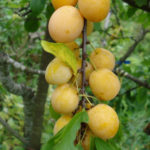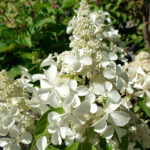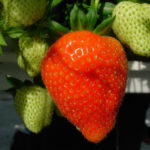Rose Charles de Gaulle
Hybrid tea roses stand out noticeably against the background of other representatives of the Rosaceae family. It is impossible not to pay attention to them - their flowers, which sometimes have incredibly beautiful shades, are too graceful, delicate and attractive. A good example is the Charles de Gaulle variety. This is a real aristocrat of "blue bloods".

History of origin
The variety belongs to the group of so-called "blue" roses. The flowers of the noble plants included in this category are sustained in blue, purple or lilac colors. The variety was bred in 1975 in France by Meilland. To obtain it, breeders used a seedling of the Sissi x Prelude species, as well as a mixture of pollen of the Caprice and Sondermeldung varieties. The plant also has other names: Katherine Mansfield, MEIlanein. Over the 40 years of its existence, Charles de Gaulle has won many world awards and titles, and quite deservedly so. Refers to very valuable varieties.
Description of appearance
The culture forms a compact shrub with straight, strong shoots covered with a lush green glossy crown of medium density leaves. Plant height ranges from 80 cm to 1 meter. The bush grows 60 cm wide. There are long sharp thorns on the shoots. The rose is characterized by medium vigor.
The flowers of the incomparable beauty are lilac-blue at the stage of full blooming. As buds, they are painted in a dark lavender color. The shape of the buds is classic goblet, at the tops there are peaks 6-8 cm long. The number of double petals curling around the edges that make up the flower is 30 or 40. The size of the cup-shaped flower itself ranges from 10 to 14 cm. Charles de Gaulle exudes a rich pleasant aroma , in which the notes of lemon, verbena, lily of the valley, barberry and saffron are easily guessed. It is known that it is for its fragrance that this culture has repeatedly received prizes and the title of "Best fragrant rose".

The flowering of the variety is abundant, continues throughout the summer season and until the first frost, however, it is not constant, but wavy, repetitive. It is a winter-hardy plant that can withstand cold temperatures down to -23 ° C, so it is not necessary to cover it for the winter, unless you live in the northern region. But the flower's resistance to rain is rather weak.
Growing features
Charles de Gaulle should be planted in an area that is well warmed by the sun's rays, but at the same time inaccessible to strong gusty winds. The best time to plant a plant in open ground is from late spring to mid-June (the soil should have time to warm up to + 13 ° C). After the implementation of this event, the earth is watered and mulched with peat around the rose bush. To ensure good growth and development of culture, it is necessary to adhere to the following recommendations:
- regularly loosen the soil under the plant;
- feed the flower (in the summer - with phosphorus-potassium, in the spring - with organic fertilizers);
- systematically water the plant with water at room temperature, in dry and hot weather - at least twice a week;
- pruning roses in spring for early and abundant flowering, in autumn - in order to thin out the bush and remove dead, diseased shoots;
- remove faded buds in a timely manner.
Before sheltering for the winter, the shoots are cut off, the plant is spud and protected with spruce branches.
Charles de Gaulle is practically not damaged by pests and fungal diseases. However, it is better to treat the plant 2-3 times with a special combined solution of fungicide and insecticide for prevention purposes in the warm season.
Use cases
The unsurpassed beauty with lilac flowers attracts attention both in single plantings and in combination with other hybrid tea varieties, and other perennials. Charles de Gaulle will add charm to any rose garden, create an atmosphere of warmth and comfort in the garden. Decorate your flower garden with this noble plant and you will not regret your choice!
